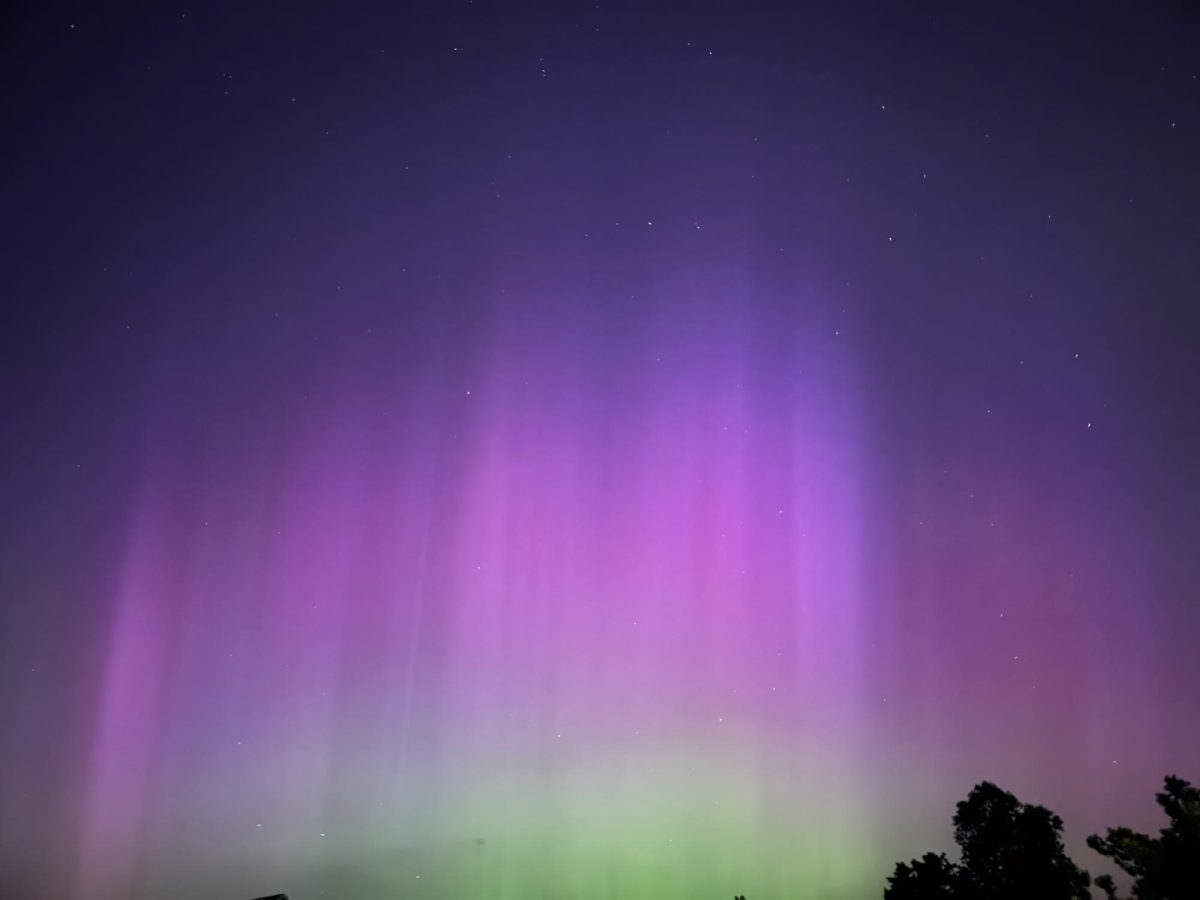Last weekend the northern lights streaked the skies of Nebraska, leaving hundreds of people in awe, wondering when the next time they could see them would be. Well, never fear, because the rare, stunning astral event might be visible in the Nebraska skies again in the next year. Many people missed them either because they didn’t have time or because they didn’t know about them at all. The northern lights are expected to make many more appearances in the next year due to increased solar activity from the sun towards the Earth.
The northern lights are caused by solar activity from the sun which causes magnetic storms in outer space. Some examples of these are solar flares and coronal mass ejections which get carried towards the Earth by solar winds. To be able to see them in Nebraska, they need to be at a high level four or five, which is expected again in the next year.
The sun’s magnetic field only reaches its solar maximum about once every eleven years and has been expected to reach the next solar maximum in July 2025. Now there are experts believing that the sun will reach its solar peak even before that, even though predicting solar weather can be extremely difficult. The last time a solar maximum was reached was in 2014, but the last time anyone got a clear viewing of the northern lights in the United States was in November 2001.
In order to see the northern lights as best as possible, make sure to go see them when it is completely dark out: around midnight works best. Also make sure to get away from any city lights or light pollution that could affect the clarity of the northern lights in the night sky. Try to find a spot with wide open skies and a cooler temperature for the best viewing experience. A popular place for viewing is pulling over on the side of an unlit country road for optimal brightness of the multicolored lights.
When it comes to the color of the northern lights, red and green colors are caused by oxygen molecules, and blue and pink colors are caused by nitrogen molecules. A mix of nitrogen and oxygen molecules can create purple or yellow. Yellow and green are the most common colors of the northern lights, while blue and red are the rarest. No matter what color, the northern lights are a stunning sight.
In case you missed the northern lights or are interested in seeing additional astrological events, there are several extra dazzling space shows before next year. On July 28 and 29, the Delta Aquarids Meteor Shower will take place, producing as many as twenty meteors per hour during its peak time. August 12 and 13 is when the Perseids Meteor Shower will blaze across the night sky, producing a maximum of sixty meteors per hour. It is famous for being one of the best showers with some of the brightest, largest meteors. November 4 to 5 holds the Taurids Meteor Shower. It is one of the smaller visible meteor showers, but still worth going to see under the midnight sky. Astrological events are rare, so make sure to take advantage of the few that come your way.








